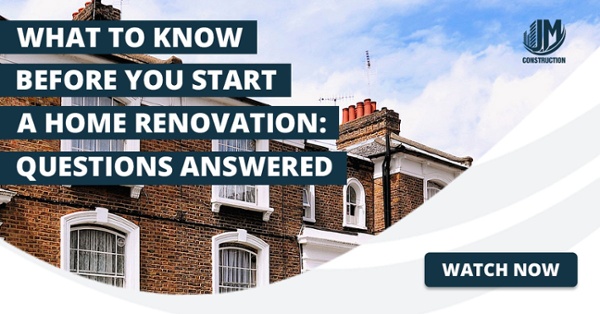Like all fashions, home refurbishment trends come and go. Stay up to date to make sure your money is well spent on a home renovation that will wow now and hold its value for years to come.
5 Home Refurbishment Trends for 2021
Sustainability is less a trend than a way of life these days, so going green or installing underfloor heating just makes good sense. Other popular home refurbishment trends in 2021 involve giving you some headspace with a loft or basement conversion or open plan living space. And if you really can’t drag the old place into the 21 st century, why not start fresh with a newbuild? Let’s review the top 5 home refurbishments trends of 2021!
1. Underfloor Heating
Its luxurious underfoot feel and improved performance have made this a huge home improvement trend recently, especially for bathrooms. The two basic systems available use either electric wires and mats or water pipes to deliver heat to selected rooms or the whole house. It works at a lower temperature and heat distribution is more even than radiators so it’s more energy-efficient and can heat a larger area for less. It’s slow to heat up, though, so you’ll need to program it to come on before you need it.
Water is more expensive and disruptive to install but better for large areas and much cheaper to run, while electric is an easier retrofit for older homes. Both work under a range of flooring and don’t usually need planning permission.
2. More Space
Extensions are always popular in areas with limited space and high property prices. If you can’t build outward, a loft conversion is a great way to gain another bedroom and will always hold its value. Or, with the trend toward home working due to Covid-19 set to continue, escaping to an office in the sky might just save your sanity.
A basement conversion is one of the least cost-effective extensions but still a popular way to gain space. Think carefully about how you repurpose it, though. Kitchens, bedrooms and living spaces need clever design and lighting to avoid a gloomy, subterranean feel.
3. New Builds
New homes have shed their ‘cookie cutter’ image lately and the quality is improving. Advantages attracting buyers include the chance to choose or customise brand new fixtures, fittings and décor, better energy efficiency and lower running costs. New builds are also popular with tenants and involve fewer repairs and maintenance for landlords.

If you’re on a budget and prepared to move to London outskirts or commuter belt, you could get a good deal. Check out areas where significant investment is being made in urban regeneration too. Or, to get a new home in the area you want, you could even knock down an old house and build on the site.
4. Open Plan Living Spaces
US influence and a move away from formal dining have seen open plan explode in popularity. Removing internal walls lets in more light and makes smaller homes seem larger and many people love the more sociable living it allows. Kitchens, dining and living rooms are the best candidates; home offices and bedrooms are best kept private. You will need careful design, though, to compensate for lost wall storage. Also, think first whether it’s for you; not everyone wants cooking smells and noise intruding into the living room or dirty dishes on display for guests to see.

5. Going Green
More sustainable homes are popular now and there’s lots you can do to improve your energy efficiency rating, from switching to renewables to simple DIY home improvements. At the top of the scale, solar panel installation is expensive but pays off long term in reduced carbon footprint and bills. Other renewable sources include air or ground heat pumps that extract heat from outside and circulate it around the house.
Upgrading old boilers, taps, showerheads, appliances and lighting will also save water and electricity. Consider installing a smart meter to track energy use or smart controls that turn off lights in unoccupied rooms. To stop heat escaping, fit draught excluders and make sure lofts, walls and ground floors are properly insulated and splash out on double glazing for a warmer, cheaper and quieter home.
Tags:
Home RenovationFebruary 10, 2021





Comments